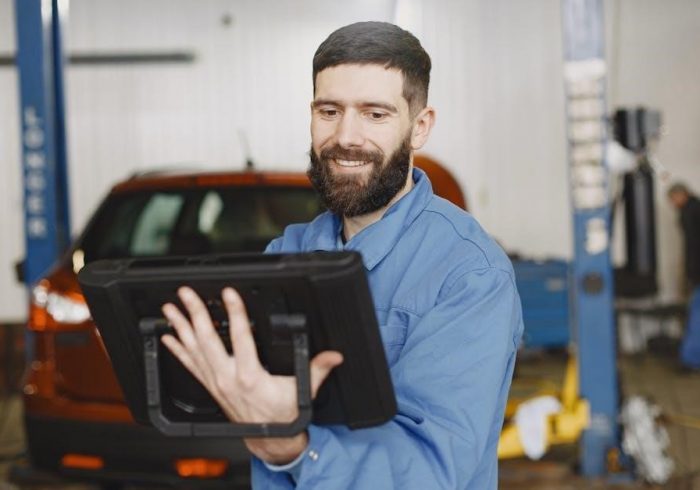The “Park Assist Blocked” error indicates a malfunction in the parking sensor system‚ often caused by dirty sensors‚ obstructions‚ or electrical issues‚ requiring immediate attention to ensure safe parking.
What is the Park Assist System?
The Park Assist System is an advanced driver-assistance feature designed to simplify parking by providing real-time feedback to the driver. It uses a combination of sensors‚ cameras‚ and software to detect obstacles around the vehicle‚ ensuring safer and more precise parking maneuvers. The system typically includes ultrasonic sensors mounted on the front and rear bumpers‚ which emit sound waves to measure distances to nearby objects. These sensors communicate with the vehicle’s computer‚ which processes the data and provides visual or audible alerts. Some systems also offer automatic steering assistance‚ guiding the vehicle into parallel or perpendicular parking spaces. The Park Assist System enhances driving convenience and reduces the risk of minor collisions during low-speed parking scenarios.
Understanding the “Park Assist Blocked” Error
The “Park Assist Blocked” error is a notification that appears on your vehicle’s dashboard when the parking assist system detects an issue preventing it from functioning properly. This error typically occurs when the system’s sensors are obstructed‚ damaged‚ or malfunctioning‚ disrupting their ability to accurately detect obstacles. Common triggers include dirt‚ mud‚ or debris covering the sensors‚ physical obstructions like bike racks or tow bars‚ or internal system glitches. When this error appears‚ the parking assist feature is temporarily disabled‚ and drivers must rely on manual parking methods. Addressing the issue promptly is crucial to restore functionality and ensure safe parking maneuvers. The error message serves as a clear indicator that maintenance or repair is needed to resolve the underlying cause;

Common Causes of Park Assist Blocked
Dirty sensors‚ loose connections‚ damaged wires‚ software glitches‚ and physical obstructions like bike racks or tow bars are the primary reasons for the Park Assist Blocked error.
Dirty or Obstructed Sensors
Dirty or obstructed sensors are the most common cause of the Park Assist Blocked error. Over time‚ sensors can accumulate dirt‚ mud‚ or debris‚ which disrupts their ability to detect obstacles. This obstruction interferes with the system’s ultrasonic or radar signals‚ leading to inaccurate or no feedback. As a result‚ the Park Assist system may fail to activate or provide unreliable information‚ increasing the risk of accidents during parking. Regular cleaning of the sensors is essential to maintain their functionality. Use a soft cloth and mild detergent to remove dirt or grime. If sensors are physically damaged‚ they may need replacement. Keeping sensors clear ensures the Park Assist system operates efficiently and safely.
Loose Connections or Damaged Wires
Loose connections or damaged wires can significantly disrupt the Park Assist system’s functionality. If the wiring harness or connectors become loose‚ the system may lose power or signal‚ triggering the “Park Assist Blocked” error. Damaged wires can prevent the sensors from communicating with the control module‚ leading to system malfunctions. Inspecting the wiring for cuts‚ corrosion‚ or wear is crucial. Tightening loose connections and repairing or replacing damaged wires can often resolve the issue. If the problem persists‚ consulting a professional technician is recommended to ensure proper diagnosis and repair. Addressing electrical issues promptly is essential to restore the Park Assist system’s reliability and safety features;
Software Glitches or System Malfunctions
Software glitches or system malfunctions can cause the “Park Assist Blocked” error‚ disrupting the system’s functionality. Temporary bugs‚ outdated software‚ or corrupted firmware may lead to intermittent or persistent errors. Symptoms include the system failing to activate‚ inaccurate sensor readings‚ or false alerts. In some cases‚ the system may completely shut down due to internal software conflicts. Restarting the vehicle or resetting the Park Assist system can often resolve minor glitches. However‚ if the issue persists‚ updating the software to the latest version or reinitializing the system may be necessary. In severe cases‚ a professional technician may need to reflash the system’s firmware to restore proper functionality and ensure safe operation.
Physical Obstructions like Bike Racks or Tow Bars
Physical obstructions such as bike racks‚ tow bars‚ or other accessories attached to the vehicle can block the parking sensors‚ triggering the “Park Assist Blocked” error. These obstructions can prevent the sensors from detecting obstacles or transmitting accurate signals‚ leading to system malfunctions. For example‚ a bike rack mounted on the rear of the vehicle may cover the rear sensors‚ causing the system to disable itself or display false error messages. To resolve this‚ remove any obstructions and ensure the sensors are clear. Restarting the vehicle after removing the obstruction may reset the system. Always check the owner’s manual for specific guidelines on using accessories with the Park Assist feature to avoid recurring issues.

Troubleshooting Steps
Start by identifying the issue: check sensors‚ clean them if dirty‚ and use an OBD-II scanner to retrieve error codes; Resetting the system may resolve the problem.
How to Check and Clean Parking Sensors
To address the “Park Assist Blocked” error‚ begin by inspecting the parking sensors‚ typically located on bumpers or around the vehicle’s perimeter. Refer to your owner’s manual for their exact locations. Use mild soap and water to gently clean dirt‚ mud‚ or debris from the sensors. Avoid harsh chemicals or abrasive materials that could damage the sensors. Once cleaned‚ dry the sensors thoroughly with a soft cloth. Test the parking assist system to see if the error persists. If the issue remains‚ it may indicate a more serious problem‚ such as damaged sensors or electrical issues‚ requiring further diagnostic steps or professional assistance.
Using an OBD-II Scanner for Error Codes

An OBD-II scanner is a valuable tool for diagnosing “Park Assist Blocked” errors. Connect the scanner to your vehicle’s OBD-II port‚ typically located under the dashboard. Once connected‚ the scanner will retrieve specific error codes related to the Park Assist system. These codes help identify issues such as faulty sensors‚ electrical malfunctions‚ or software glitches. For example‚ codes like “C0040” or “C0050” often indicate problems with parking sensor circuits or communication errors. After retrieving the codes‚ refer to your owner’s manual or a repair manual for code interpretations. This step allows you to pinpoint the exact cause of the error‚ guiding you toward the appropriate repair or maintenance steps. Regular use of an OBD-II scanner can also help prevent future issues by detecting potential problems early.
Resetting the Park Assist System
Resetting the Park Assist system can often resolve the “Park Assist Blocked” error. Start by turning off the ignition and waiting for 10-15 seconds to allow the system to reset. Restart the engine and check if the error message disappears. If the issue persists‚ try disconnecting the battery for 10-15 minutes to reset the vehicle’s computer. Reconnect the battery and test the system again. In some cases‚ using an OBD-II scanner to clear error codes may also reset the Park Assist system. If these steps don’t resolve the problem‚ further diagnosis or professional assistance may be required to ensure proper functionality. Regular resets can help maintain the system’s efficiency and prevent recurring errors.
Possible Solutions
Possible solutions include fixing or replacing damaged sensors‚ inspecting electrical connections‚ and updating software. These steps can resolve the Park Assist Blocked error effectively.
Fixing or Replacing Damaged Sensors
Damaged sensors are a common cause of the Park Assist Blocked error. Sensors can become dented‚ cracked‚ or disconnected due to road debris or physical impact. To fix this‚ inspect each sensor visually for any visible damage. If a sensor is damaged‚ it may need to be replaced entirely. Replacement sensors can be purchased from automotive parts suppliers or dealerships; While DIY replacement is possible‚ it often requires specialized tools and technical knowledge. Consulting a professional technician is recommended to ensure proper installation and system calibration. Addressing damaged sensors promptly will restore your Park Assist system’s functionality and improve parking safety. Regular inspections can also prevent future issues.
Inspecting and Repairing Electrical Connections
Loose or damaged electrical connections can trigger the Park Assist Blocked error. Start by inspecting the wiring and connectors linked to the sensors and control module. Use an OBD-II scanner to identify error codes related to electrical faults. Corrosion or wear on connections can disrupt signal transmission. Clean or replace corroded terminals and ensure all connections are secure. If a wire is damaged‚ repair or replace it promptly. In some cases‚ a faulty electrical connection may require professional diagnosis‚ especially if the issue persists after basic checks. Addressing these electrical problems can resolve the error and restore proper system functionality‚ ensuring safe and reliable parking assistance.
Updating Park Assist Software
Software glitches can cause the Park Assist system to malfunction‚ leading to a blocked error. Regular updates ensure the system operates correctly and address any bugs. Use an OBD-II scanner to check for software updates or access the vehicle’s infotainment system to download the latest version. Outdated software may result in sensor communication issues or false error messages. After updating‚ restart the system to apply changes. If the problem persists‚ consult a professional to ensure the software is properly installed. Keeping the Park Assist software up-to-date is essential for reliable functionality and accurate sensor performance‚ minimizing the risk of errors and enhancing parking safety.

When to Consult a Professional
If DIY fixes fail‚ consult a professional for advanced diagnostics. Technicians can address complex issues like multiple sensor damage or deep software malfunctions effectively.
Recognizing When DIY Fixes Aren’t Enough
If cleaning sensors or resetting the system doesn’t resolve the “Park Assist Blocked” error‚ it may indicate more serious issues. Persistent errors could stem from damaged sensors‚ faulty wiring‚ or software malfunctions. If multiple sensors are malfunctioning or electrical connections are compromised‚ DIY solutions may not suffice. Additionally‚ if error codes from an OBD-II scanner point to complex system failures‚ professional intervention is necessary. Ignoring recurring issues can lead to unsafe parking conditions‚ so consulting a certified technician is recommended to ensure proper diagnostics and repairs.
How a Technician Can Diagnose the Issue
A certified technician can diagnose the “Park Assist Blocked” error using advanced tools and methods. They will typically start by connecting an OBD-II scanner to retrieve specific error codes‚ which help identify the root cause. Next‚ they may perform a physical inspection of the sensors‚ checking for damage‚ misalignment‚ or corrosion. Electrical connections and wiring are also tested for continuity and integrity. If sensors are faulty‚ they may use specialized equipment to test their functionality. In some cases‚ the system may require recalibration after repairs. Technicians also review the vehicle’s software for updates or glitches that could be affecting the park assist system. Their expertise ensures a thorough and accurate diagnosis‚ addressing issues beyond basic DIY fixes.
Regular maintenance and prompt attention to issues ensure optimal park assist performance. Consulting professionals for complex problems guarantees safety and reliability in parking maneuvers.
Preventive Measures to Avoid Future Issues
Regularly cleaning parking sensors and ensuring they are free from debris can prevent blockages. Checking for software updates and maintaining proper electrical connections helps avoid malfunctions. Avoiding harsh weather conditions and parking in areas with excessive dust or mud reduces the risk of sensor obstruction. Inspecting sensors for physical damage and addressing issues promptly prevents long-term problems. Ensuring accessories like bike racks or tow bars are removed when not in use minimizes obstructions. Following the owner’s manual guidelines for system maintenance and operation further enhances reliability. These proactive steps ensure the Park Assist system functions efficiently‚ reducing the likelihood of errors and improving overall parking safety.



